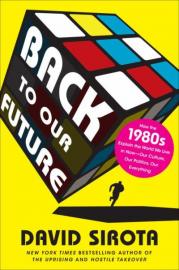By Darren Breese, Director
The recent Youth Mega Mashup Event was a tremendous opportunity to learn the latest trends in the Youth and Millennial space. There is considerable agreement among leaders in the field. This is a new generation of consumers who value the environment and social causes, interaction with each  other and with brands, entrepreneurship, customization and personalization, technology, and above all else—authenticity. The implications for brands and businesses are vast as this new generation’s spending power becomes stronger and stronger.
other and with brands, entrepreneurship, customization and personalization, technology, and above all else—authenticity. The implications for brands and businesses are vast as this new generation’s spending power becomes stronger and stronger.
One of the most anticipated presentations of the Mashup Event came from Jane McGonigal, PhD, an acclaimed game developer, researcher, and author. Her research in the field of gaming underscores the idea that gaming produces positive stress which creates “Super-Powered Hopeful Individuals.” She presented the shocking statistic that human-beings spend 3 billion hours/week worldwide playing video games. In comparison, 100 million TOTAL man hours have been spent creating maybe the most widely used online resource—Wikipedia. To ask, “Is it worth it?” is an understatement to some. But, McGonigal is convinced it is, and she answers the question with the acronym PeRMA (Positive emotion, Relationships, Meaning, Accomplishment) created by Dr. Martin Seligman, which she contends is a by-product of playing games. She contends that games can actually solve larger social problems by increasing individuals’ PeRMA. Her perspective suggests that researchers should be building more feedback loops into their instruments. We need an approach to this new generation that is less task-based and more game-like to help engage research respondents and, in turn, elicit higher quality insights and feedback.
McGonigal’s keynote was foreshadowed by an earlier presentation by the insights and research folks at MTV that argued “Gamification” is the future of Marketing. By making a game of Marketing, brands and companies engage and motivate their consumers while also creating lasting relationships with them. Brands using games as part of their Marketing campaigns are in a better position to create emotional relationships with their consumers.
Connecting with consumers by letting them create the content of their Marketing strengthens consumers’ perception of a brand’s authenticity. Doritos and Ford presented ways in which they engaged their consumers by allowing them to create video content and let their voices be heard. Brands and companies have seen increased success through transparency and allowing their consumers to tell them what they’re all about.
The use of social media within the generation was a hot topic as well. Social media allows Millennials to share their opinions and recommendations and to spread influence. This new generation of consumers harnesses the power of peer-to-peer relationships to democratize influence and recommendations. The term “Repfluence” was used to describe this trend in consumer interaction. To make an even more informed decision, consumers can decide how trustworthy their peers’ influence is by their Klout score, which measures not the quantity of content but the quality with which they spread it. The younger generation of consumers is more likely to be influenced by their peers than by traditional advertising, which means today’s Marketers are re-thinking the way they connect with consumers.






 Online Privacy Protection Act (
Online Privacy Protection Act (

 questions you answer, the more points you accrue. And, with points you get to pose questions to other users. Not a bad idea leveraging online technology and rewarding business people with something of real value—information. The website recently had a contest and I entered on a whim. My entry was an essay critiquing the site.
questions you answer, the more points you accrue. And, with points you get to pose questions to other users. Not a bad idea leveraging online technology and rewarding business people with something of real value—information. The website recently had a contest and I entered on a whim. My entry was an essay critiquing the site.
 MediaCT and included 5,013 U.S. smartphone users between the ages of 18 and 64, will be seen as a watershed event for MR. If anyone, anywhere harbored the slightest shadow of a doubt about the sea change that will engulf both the matter and the means of marketing research as a result of the widespread ownership of smartphones, that doubt should now be as dead as the recently deceased bin Laden.
MediaCT and included 5,013 U.S. smartphone users between the ages of 18 and 64, will be seen as a watershed event for MR. If anyone, anywhere harbored the slightest shadow of a doubt about the sea change that will engulf both the matter and the means of marketing research as a result of the widespread ownership of smartphones, that doubt should now be as dead as the recently deceased bin Laden.







